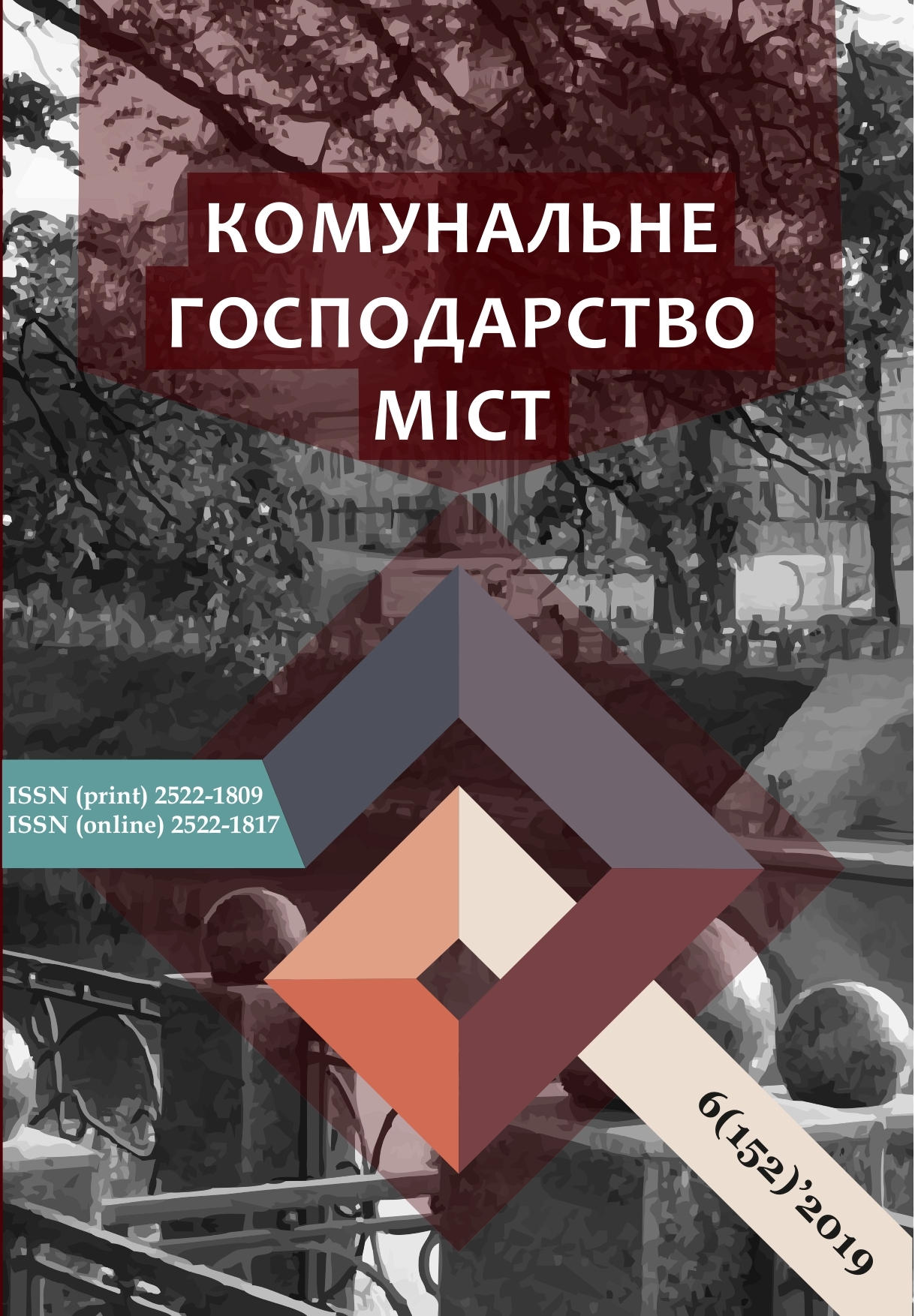THE COMPLEX PROGRAM OF FORMING THE VISUAL IMAGE OF A CITY (KHARKIV)
Array
Keywords:
urban space, architectural environment, visual aesthetic quality, commercial signs, consumer perception, historic streetscape.Abstract
This research paper continues a series of articles devoted to the problem of polluting the city visual environment with commercial signs, to which we refer billboards and posters, signboards, shop entrances and showcases, all kinds of announcements, arrows and pointers, facade plaques, advertisement banners and street banners, etc. The article gives a brief overview of some studies of foreign authors-theorists in the field of urban planning, architecture and urban design of the last decade, such as Anne M. Cronin, Jack L. Nasar, Artur E Stamps. It is noted that the primary focus in their works these authors make on perception and assessment of urban spaces visual qualities by a consumer, as well as on the effect of commercial signs (mostly negative) on a visual image.
The most attention in this article is given to the dispute with the architect Adriana Portella, who is Doctor of Science in the field of urban design and the author of the monograph “Visual pollution: advertising, signage and environmental quality”. The significant contribution of this scholar to the science dealing the above-described issue is emphasised; Adriana Portella’s research methods are described. The author has tried to identify the general tendencies in perception of the urban environment among consumers of different countries, ages and social strata and suggested the principles on which rules-regulators of placing commercial signs in the central historical areas of a city should be based.
The article describes a creative experiment-exercise, where various situations with the placement of commercial signs on an architectural object are simulated, and the resulting reactions and arising sensations are traced. An attempt to evaluate the cumulative visual image from the position of Gestalt psychology is presented. The article describes a creative experiment-exercise, where various situations with the placement of commercial signs on an architectural object are simulated, and the resulting reactions and arising sensations are traced. An attempt to evaluate the cumulative visual image from the position of Gestalt psychology is presented.
References
Fassler, L. (n.d.) Autonomous Worlds. Retrieved from http://www.larissafassler.com/startside.html [02.10.2019].
Dempf, R. (n.d.) Delete! Retrieved from http://www.steinbrener-dempf.com/en/portfolio-item/delete/ – [02.10.2019].
Graf, G. (n.d.) Hidden town. Retrieved from http://www.gregorgraf.net/ [02.10.2019].
Kolhonen, P. (n.d.) Moving Pictures – Advertising, Traffic and Cityscape. Retrieved from https://contempaesthetics.org/newvolume/pages/article.php?articleID=351 [02.10.2019].
Averbakh, М.Ya. (2015). Visual communications in architectural environment. Journal scientific review, 9 (19), 65––73. [in Russian]
Cronin, A. (n.d.) Advertising and the metabolism of the city: urban spaces, commodity rhythms. Retrieved from http://www.research.lancs.ac.uk/portal/en/publications/-(830176ab-fdf1-4aff-8702-f08b7b283fe2).html/ [02.10.2019].
Cronin, A. (n.d.) Advertising, Commercial Spaces and the Urban. Retrieved from: http://www.research.lancs.ac.uk/portal/en/publications/advertising-commercial-spaces-and-the-urban(8608315d-ea5e-4ac0-a319-6bd51341d814).html [08.09.2019].
Nasar, J. (n.d.) Visual Preferences in Urban Signscapes. Retrieved from: https://www.researchgate.net/publication/249624307_Visual_Preferences_in_Urban_Signscapes [02.10.2019].
Koeck, R. (n.d.) Outdoor advertising in urban context: spatiality, temporality and individuality. Retrieved from http://www.tandfonline.com/doi/abs/10.1080/0267257X.2014.909869/ [02.10.2019].
Stamps, A. (n.d.) A Walk down the block: spatial and temporal parameters of aesthetic judgments about ordinary streetscapes. Retrieved from https://www.researchgate.net/publication/228111207_A_walk_down_the_block_Spatial_and_temporal_parameters_of_aesthetic_judgments_about_ordinary_streetscapes [02.10.2019].
Stamps, A. (n.d.) Efficient visualization of urban spaces. Retrieved from https://www.researchgate.net/publication/265250326_Efficient_visualization_of_urban_spaces [02.10.2019].
Portella, A. (2014). Visual pollution: advertising, signage and environmental quality. Farnham, Surrey, England : Ash-gate Publishing limited, 316.
Averbakh, М.Ya. (2017). Impact of commercial streetscapes on visual quality of architectural environment. Sci-entific and technical collection "Municipal economy of cities". Series: “Engineering Sciences and Architecture”, 135. Kharkiv : NUUK, 66-73. [in Ukrainian].
Averbakh, М.Ya. (2017). Regarding issues of advertising and architecture coexistence. Architectural Journal КNUCIА: scientific and production collection, 11-12. Kiyv : КNUCIА, 264-274. [in Ukrainian].
The architectural and artistic concept of the external ap-pearance of the streets, highways and territories of the city of Moscow, made in a pilot mode (in terms of placement of infor-mation structures (n.d.)) Retrieved from https://www.artlebedev.ru/moscow/design-code/ — [15.07.2017]. [in Russian].
Streamlining advertising and information in St. Peters-burg. (n.d.) Report. Retrieved from https://studfiles.net/preview/6219509/ [03.10.2019]. [in Russian].
Design code of Odessa. Rules for the design of signs in the historical environment. (n.d.) Retrieved from http://design-code.archodessa.com/ [03.10.2019].
Downloads
Published
How to Cite
Issue
Section
License
The authors who publish in this collection agree with the following terms:
• The authors reserve the right to authorship of their work and give the magazine the right to first publish this work under the terms of license CC BY-NC-ND 4.0 (with the Designation of Authorship - Non-Commercial - Without Derivatives 4.0 International), which allows others to freely distribute the published work with a mandatory reference to the authors of the original work and the first publication of the work in this magazine.
• Authors have the right to make independent extra-exclusive work agreements in the form in which they were published by this magazine (for example, posting work in an electronic repository of an institution or publishing as part of a monograph), provided that the link to the first publication of the work in this journal is maintained. .
• Journal policy allows and encourages the publication of manuscripts on the Internet (for example, in institutions' repositories or on personal websites), both before the publication of this manuscript and during its editorial work, as it contributes to the emergence of productive scientific discussion and positively affects the efficiency and dynamics of the citation of the published work (see The Effect of Open Access).

